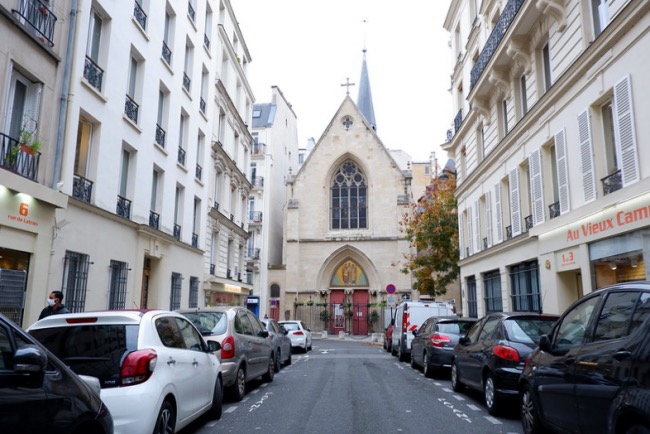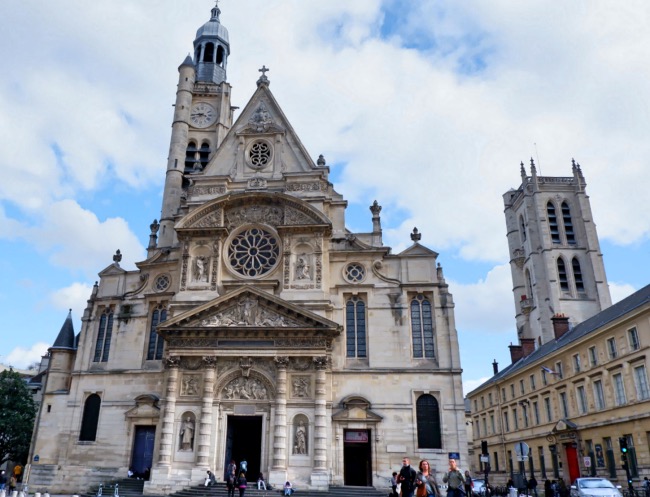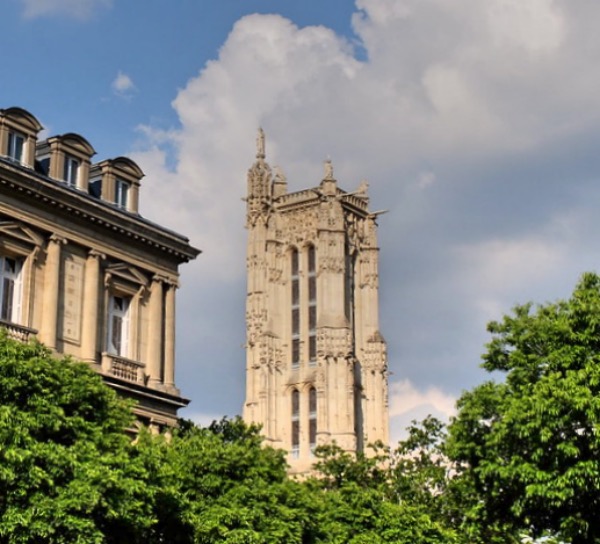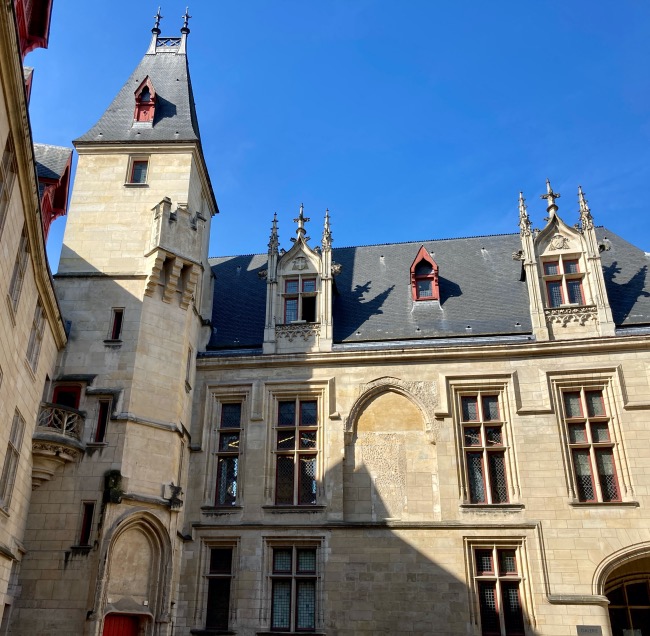
While much of the Roman Paris, called Lutetia, was destroyed by centuries of barbarian and Viking invasions, a number of vestiges from the Middle Ages have managed to survive, bearing witness to Paris’ rich, layered history. After you’ve seen les incontournables Notre Dame, Sainte Chapelle, and Saint-Germain-des-Prés, go in search of these lesser-known Medieval sites, now carefully woven into the city’s modern fabric.
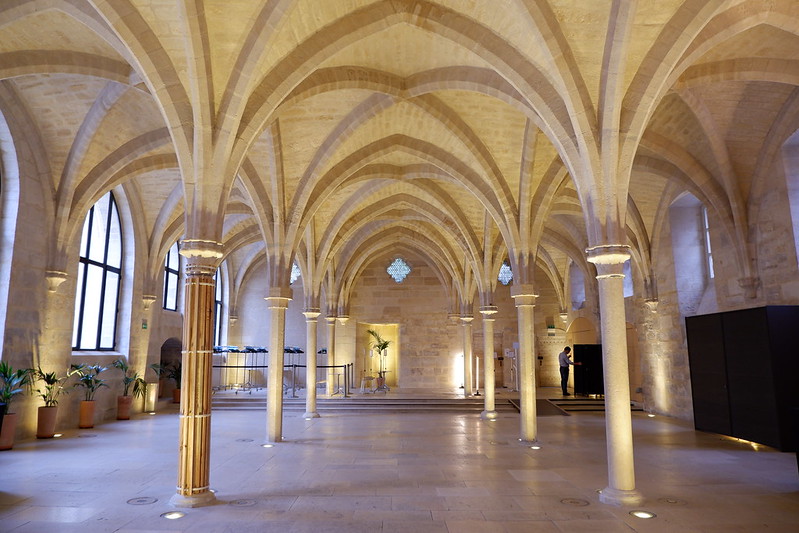
Le Collège des Bernardins
The Latin Quarter, which occupies much of the north of the 5th arrondissement, is home to the largest concentration of Medieval vestiges in Paris. The area used to be dotted with various colleges and monasteries, many which eventually formed the University of Paris. What’s left of one of these, Le Collège des Bernardins, sits peacefully on the quiet rue de Poissy. Dating back to the mid 13th century, its large refectory, or dining hall, can be visited free of charge during opening hours. Fully restored, this space is still used today for conferences.
Address: 20 Rue de Poissy, 75005 Paris
l’Église des Saints-Archanges
Found a short walk from the Collège des Bernardins are the remnants of another Medieval college. Built in the late 13th century, the Collège de Beauvais was one of the largest in the whole area. The only part of it that withstood the Revolutionary destruction of religious buildings and the Haussmann modernisation of the city in the mid-1800s is its former chapel. Modelled after Sainte-Chapelle, it’s since been converted into a Romanian Orthodox church and can be visited, although check its opening hours first as they are limited. Learn more about it, and the history of it and the other Medieval colleges, in episode 5 of the Paris Caché podcast.
Address: 9 Bis Rue Jean de Beauvais, 75005 Paris
Tour Clovis (Clovis Tower)
If you’re studying at the historic Bibliothèque Sainte Geneviève, located near the Pantheon, you may have already noticed this intriguing tower jutting into the sky beside the Saint-Etienne-du-Mont Church. The bell tower is all that remains of the former Sainte-Geneviève church, which was part of an abbey of the same name, founded in 502 by Clovis, the first king of the Franks. The abbey church was torn down when a larger replacement church was commenced. If you look carefully at the 45-metre bell tower you can see the style varies slightly as it rises, the bottom part being constructed in the 11th century versus the 15th century for the top half. The Tour Clovis, along with the parts of the abbey which were not destroyed during the Revolution, are now a prestigious high school, le Lycée Henri IV.
Address: 65 Rue du Cardinal Lemoine, 75005 Paris
Vestiges of the Philippe Auguste Wall
The first major wall around Paris was constructed by King Philippe Auguste from the late 12th to early 13th centuries. Encompassing just over 5 kilometres on both banks of the city, it rose six to eight metres in height and had 77 semi-circular towers at 60-metre intervals. The city wall was expanded on the Right Bank in the mid 1300s by Charles V. These walls were gradually torn down during the reign of Louis XIV; however, a few sections are still visible. Near the Tour Clovis, further down on rue Clovis, is a one of these. On the Right Bank, you can spot a few sections in the Marais including a large section behind the Saint-Paul-Saint-Louis church (along the basketball court) and also in the Jardin des Rosiers-Joseph Migneret (pictured above).
Hôtel de Sens
The Marais district hides a few other Medieval gems, like this historic residence. One of the last buildings constructed in the Gothic style in Paris, it was commissioned in 1475 as the city mansion for the bishops of Sens. It is one of only two Medieval civic buildings in the Gothic style that survived the centuries, the other being the Hotel de Cluny, now the National Medieval Museum. This building now houses the Forney art library. Although it was heavily restored, you can see its turreted towers, gargoyles and interior courtyard (top image). Don’t miss its lovely back garden and before you leave, take note of the facade. You’ll see a small round object with the words “28 juillet 1830,“ the date of the start of the Trois Glorieuses, the three-day revolution that toppled what history refers to as the July Monarchy. Cannonballs were flying through the area and one of these got lodged into the wall!
Address: 7 Rue des Nonnains d’Hyères, 75004 Paris

Photo credit: Cloître des Billettes: Guilhem Vellut / CC
The Billettes Cloister
Tucked away on the lively rue des Archives is Paris’s only remaining Medieval cloister. Constructed in 1427 next to the convent of the Brothers of Charity Hospital of Our Lady (mostly known today as Les Billettes). The church itself was rebuilt in the mid-18th century, but the cloisters went untouched. Recently restored, today they host temporary art exhibitions and other events in addition to serving as a Protestant (Lutheran) worship space.
Address: 24 Rue des Archives, 75004 Paris
Hôtel de Clisson
Further up the street on rue des Archives you can notice some intriguing turrets. These are all that remain of the former Hôtel de Clisson, the residence of Olivier de Clisson. When it was built in the 1300s, the hôtel stood just outside the Paris city walls. In 1553 it was bought by François de Lorraine, the Duke of Guise, and was later sold by his family to the Prince and Princess de Soubise. This noble family then demolished most of the Medieval building to make way from a more modern home, today the home of the National Archives, which is accessed via rue des Francs Bourgeois. The historic restored baroque interiors can also be visited free of charge.
Tour Saint-Jacques (St James Tower)
One of the last Medieval structures built in Paris, this flamboyant Gothic tower, standing close to Place de Châtelet, is all that is left of the Eglise Saint-Jacques-de-la-Boucherie, which was destroyed in 1797 during the French Revolutionary period. The church and its bell tower were built between 1509 and 1523, funded by the butchers of the nearby Les Halles Market. You can admire the tower from the garden which surrounds it or visit it during guided tours held seasonally mid-summer to mid-autumn.
Address: Square de la tour Saint-Jacques 75004 Paris
You can visit more intriguing offbeat sites in Paris, including the Medieval Tour Saint Jean le Peur, in this other article on our blog!
And if you’re interested in travelling further afield, check out the well-preserved ramparts and impressive gates of Provins, once a medieval trading hub, accessible via commuter rail from Paris.
Interested in delving deeping into Medieval Studies in Paris? Consider applying for our in Medieval and Early Modern Studies MA offered at the Paris School of Arts and Culture. Discover this and our other Master’s Programmes in the Humanities taught in Paris here.





